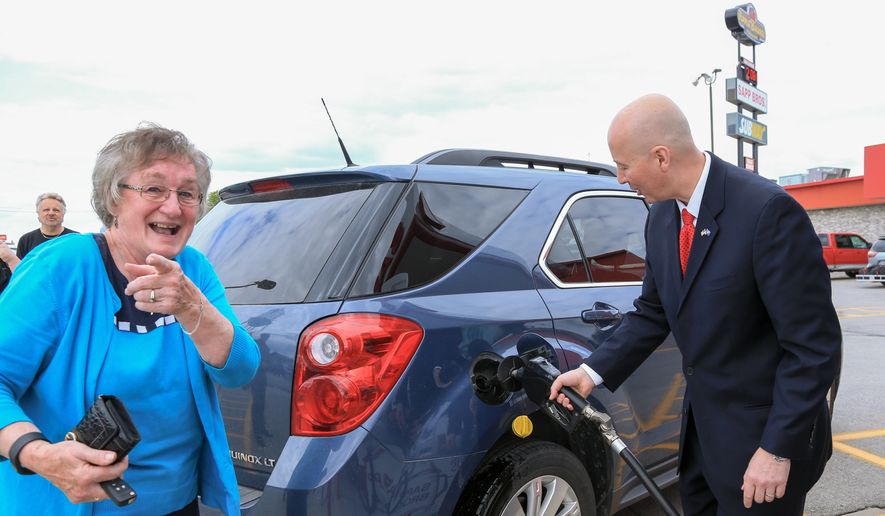In what industry leaders heralded as proof that the “blend wall” is nothing more than a myth, a new study released Wednesday shows that U.S. gasoline contained more than 10 percent ethanol on average for the first time last year.
The report, released by the Renewable Fuels Association (RFA) and citing recent data from the federal Energy Information Administration, says that the average ethanol content in gasoline last year was 10.04 percent — the first time it’s topped the 10-percent mark, which ethanol critics have maintained was the limit for safe operation for the country’s fuel infrastructure and for many automobiles.
The news comes amid uncertainty for the ethanol industry under President Trump. While the president was highly supportive of ethanol and the Renewable Fuel Standard — the 2007 legislation that mandated ethanol be mixed into the nation’s gas supply at increased levels each year — other administration officials, such as EPA Administrator Scott Pruitt, have been much more skeptical.
There’s also an increased effort from oil-and-gas industry leaders, who clearly have the ear of the White House and the EPA, to stop the growth of the ethanol industry and halt increased blending into gas supplies.
For now, however, the ethanol sector says Wednesday’s report is proof that going beyond 10 percent ethanol in gasoline isn’t the major issue some have made it out to be.
“EIA’s data once again shows that the oil industry’s blend wall narrative is bankrupt, intended only to mislead consumers and undermine support for the Renewable Fuel Standard,” said Bob Dinneen, president and CEO of RFA, the ethanol industry’s leading trade group. “The facts provide a different narrative. Ethanol is the lowest cost and cleanest burning source of octane today. Driven by the RFS and attractive blending economics, domestic refiners and blenders used more ethanol in 2016 than ever before and it’s likely that trend will continue this year.”
According to the government figures, total U.S. gas consumption was about 143.367 billion gallons last year, and that fuel contained just under 14.4 billion gallons of ethanol. That made the average content in a gallon of gasoline about 10.04 percent.
The trend accelerated in the latter part of the year and continued into 2017.
The RFA said that national average ethanol content was at 10 percent or higher in six of the last seven months of 2016. In December, it hit a record high of 10.30 percent.
That number was even higher in early 2017, hitting 10.41 percent in early January, the RFA said.
But the oil-and-gas industry is redoubling its efforts to stop even more ethanol from ending up in the nation’s fuel supply. Earlier this month, the American Petroleum Institute — the sector’s leading trade group and a powerful force in Washington — released a poll that found 68 percent of voters say they’re concerned about more ethanol in gasoline, and 74 percent said they believe government ethanol mandates could raise fuel prices.
Ethanol proponents have questioned the study and its findings.
Moving forward, there is legitimate concern that higher ethanol blends, such as the 15-percent blend known as E15, may not be safe for all engines and that eventually ethanol will indeed hit a blend wall.
“Nearly 85 percent of vehicles on the road today were not designed for higher ethanol blends, such as E15,” Frank Macchiarola, downstream group director at API, said earlier this month. “Higher ethanol blends threaten engines and fuel systems — potentially forcing drivers to pay for costly repairs, according to industry testing. And the public remains uneasy about that, with three quarters of respondents expressing concern about breaching the blend wall.”
• Ben Wolfgang can be reached at bwolfgang@washingtontimes.com.




Please read our comment policy before commenting.